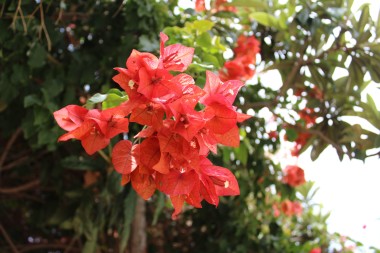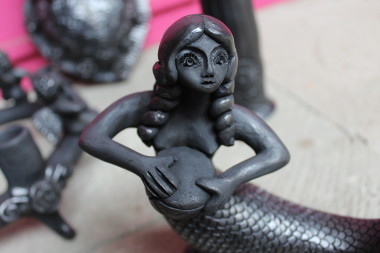Alejandro Martínez is an artist and professor who teaches at the Universidad Mesoamericana and Blaise Pascale Preparatory School. Among the classes he teaches are graphic design, drawing, and printmaking. He also occupies a studio in downtown Oaxaca, where paintings and large swatches of fabric cover easels and the walls – all sporting the same rich reds, purples and maroons.
These pigments are the basis of his work and are derived from “cochinilla,” or cochineal insect. The cochineal are cacti parasites whose eggs and outer shell are crushed to produce red dye. This dye has been used for centuries on various structures, from church stuccos to ancient temples constructed by the Zapotec civilization at Monte Albán. Cochineal played an important role as the region’s major export; however, its use dropped heavily after the development of synthetic dyes. Today it is a precious commodity, at $120 per kilo.
Using different additives such as lime juice and allum, Martínez creates fifteen tones and colors with the cochinilla dye. In his art class at Blaise Pascale, fifteen and sixteen-year-old students are learning to experiment with the process of painting cochineal dye on fabric. Martínez emphasizes that there is still much to be learned about the potential uses of the dye and believes that it is important to pass on the knowledge and learning process to a new generation.
As for his own art, many of Martínez’s latest works feature beautiful, impressionistic trees with expansive foliage brought to life by the cochinilla dye. Martínez explains that these trees are representative of family and fatherhood. He explained that each time his family traveled to a new place, they would bring back a tree. He has painted nearly five hundred trees that signify childhood memories and stories of his past.
When asked to describe his work in one word, Martínez responded, “Originalidad”. It is no surprise that this innovative approach of fusing ancient technique with modern art has called national attention to Martínez’s work.

















